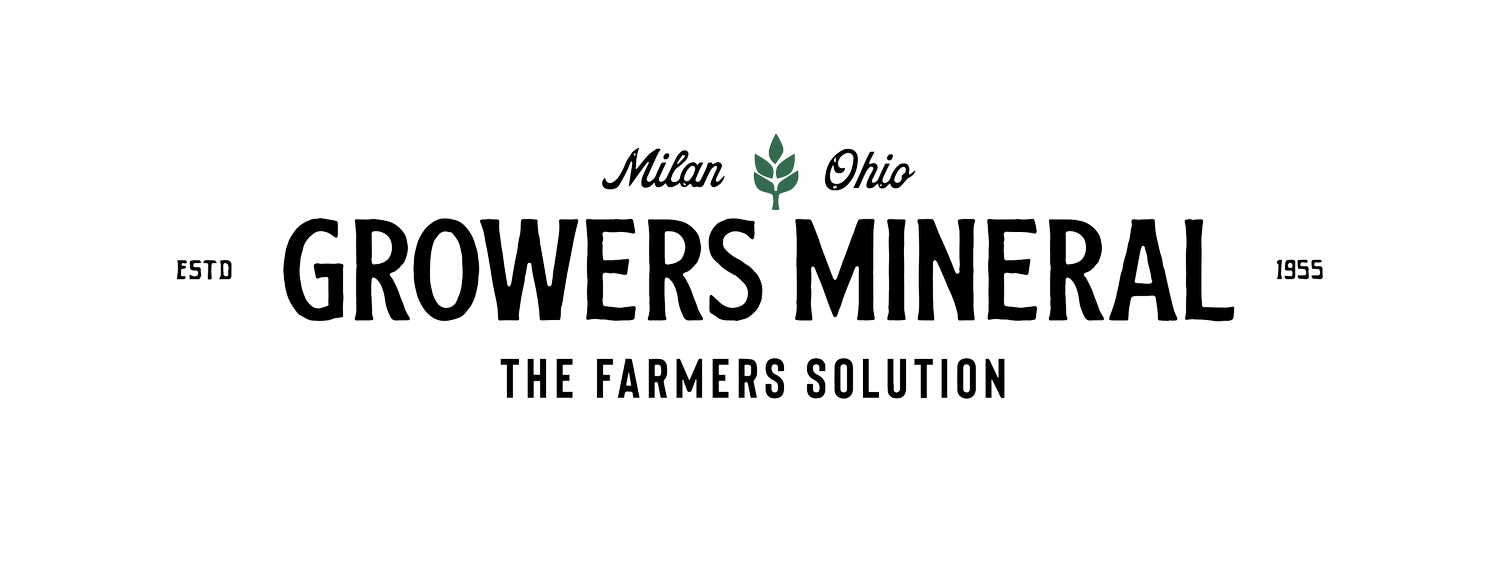Growers Grown Crops Shine
By Jim Halbeisen
Two of our Growers sales representatives have used a fairly new lab test and calculation to determine the quality of feed produced using the theories of the Growers Program. Head to head, with all variables equal except the fertility, one dairy farmer was estimated to be able to produce $233.10 in additional value per acre using the Growers Program.
Two of our Growers sales representatives have used a fairly new lab test and calculation to determine the quality of feed produced using the theories of the Growers Program. Head to head, with all variables equal except the fertility, one dairy farmer was estimated to be able to produce $233.10 in additional value per acre using the Growers Program. Below is an abbreviated explanation. (For the full paper, please contact the Growers office and we will send it out to you.)
The New York state company, Dairy One Forage Testing Laboratory, Inc., has developed a quality calculation using a computer spreadsheet program called MILK2000. MILK2000 uses forage analyses which include crude protein, neutral detergent fiber (NDF), in vitro NDF digestibility, starch, and non-fiber carbohydrate. From these, their computer program estimates energy content and predicts milk production per ton of forage dry matter (DM). The calculation combines yield and quality into a single term.
John Sensenig, a GNS representative from New York state, had a farmer who varied his fertility approach on a corn crop that was harvested for corn silage. With the field being of uniform soil make-up, the farmer kept all other production practices such as plant variety, population, weed control, manure application and time of planting the same, but he varied the fertility approach.
On one side of the field, 200 pounds per acre of ammonium sulfate was bulk spread before planting. The crop was planted using 4 gallons per acre of GNS in the row and 2 gallons per acre of GNS as a foliar spray.
On the other side of the field, 200 pounds per acre of ammonium sulfate and 100 pounds per acre of urea were bulk spread. The crop was planted with 25 gallons of a 7-21-7 fertilizer.
When the crop was harvested, John collected silage samples from each side. Both fertility treatments produced 20 tons per acre at 70% moisture or 30% dry matter. Thus, each treatment produced 6 tons of dry matter corn silage per acre. Using the value of $15 per one hundred pounds of milk, and the MILK2000 computer program, he calculated the economic advantages of the GNS fertility approach.
The analyses from Dairy One Forage Testing Laboratory, Inc. MILK2000 spreadsheet are summarized in Table 1. The bottom lines show the GNS fertility was higher than the competitor's fertility by 259 (3,698-3,439) pounds of milk per ton of dry matter or $233.10 per acre.
Daniel Weaver, a GNS representative from Georgia, used the MILK2000 spreadsheet to compare soil fertility treatment effects on forages, which are listed in Table 2. All cultural practices were the same between the GNS fertility and the competitor's fertility, except the corn variety. The yield for the competitor's fertility was the average of the eight different varieties tested (Table 3).
Prior to the 2004 growing season, the GNS fertility side received 3 tons per acre of high calcium limestone. Prior to the 2005 growing season, it received an additional 1 ton per acre of limestone. During the 2005 growing season, half of the GNS fertility side received 220 pounds of urea per acre flown on at four feet. The other half received 220 pounds of urea per acre flown on at four feet, plus 5 gallons per acre of GNS in the row and 2 gallons per acre of GNS as a foliar spray.
On the competitor's fertility side, 292 pounds per acre of a combination of products was applied preplant. The total result was 35 pounds per acre of N, 40 pounds per acre of P O , 60 pounds per acre of K O, 7.5 pounds per acre of Mg (magnesium), 15 pounds per acre of S (sulfur), and 0.8 pounds per acre of B (boron). When the corn was about four feet tall, 220 pounds of urea were flown on.
The yields for the GNS fertility using only calcium and nitrogen yielded 18.73 tons per acre of corn silage at 30% dry matter. The GNS fertility with GNS, calcium, and nitrogen yielded 19.97 tons per acre of corn silage at 30% dry matter. The competitor's fertility with nitrogen yielded 19.09 tons per acre of corn silage at 30% dry matter.
The difference between the GNS fertility plot is the use of 7 gallons of GNS. Daniel implemented this to see if GNS would help improve the energy produced in the crop tissue. The GNS provided an additional 1,987.7 (20,429.3 - 18,441.6) pounds of milk per acre which is an additional $298.16 per acre if the value of milk is $15 per 100 pounds. Thus, with this arithmetic, the producer was well compensated for the cost of the GNS.
In conclusion, Daniel has told us that since the corn varieties were different, he didn't want to talk much about comparing the GNS fertility to the competitor's fertility. However, he plans to conduct a comparison in 2006 that removes that variety difference. He is doing that because in 2005, the difference between the GNS fertility and the competitor's fertility was 3,735.1 (20,429.3 - 16,694.2) pounds of milk per acre which resulted in a $560.27 per acre advantage to the Growers Program when milk is valued at $15 per 100 pounds.



